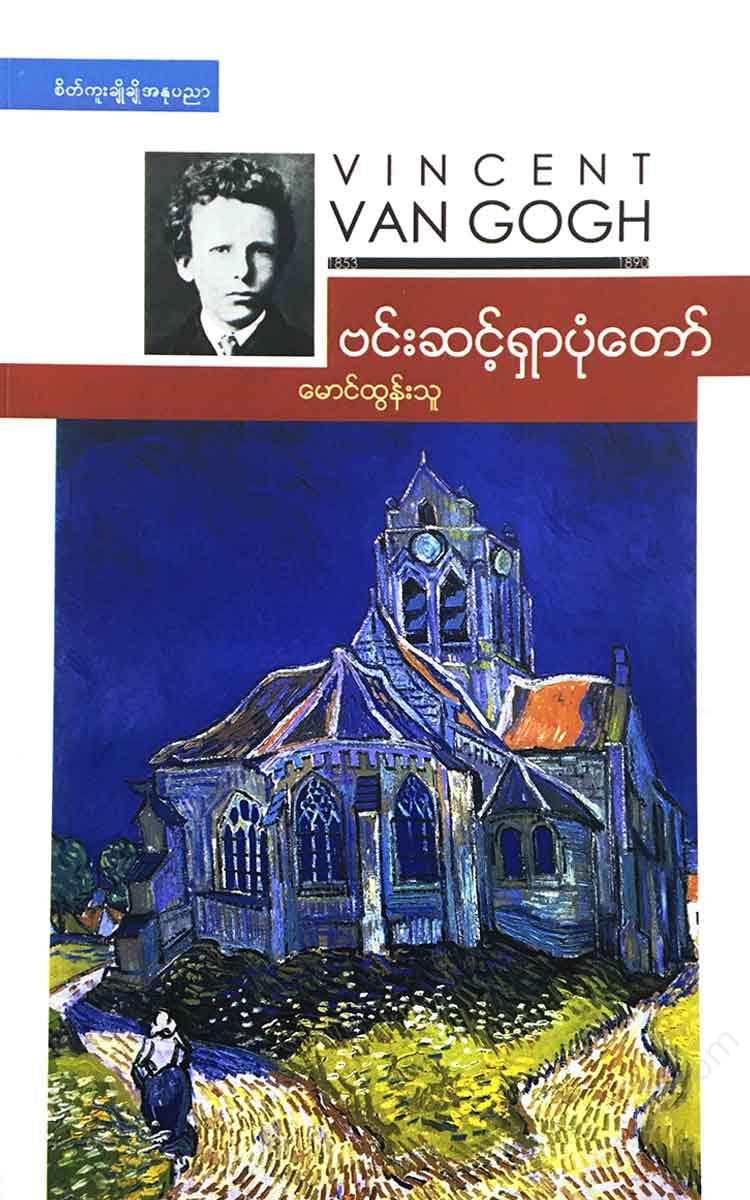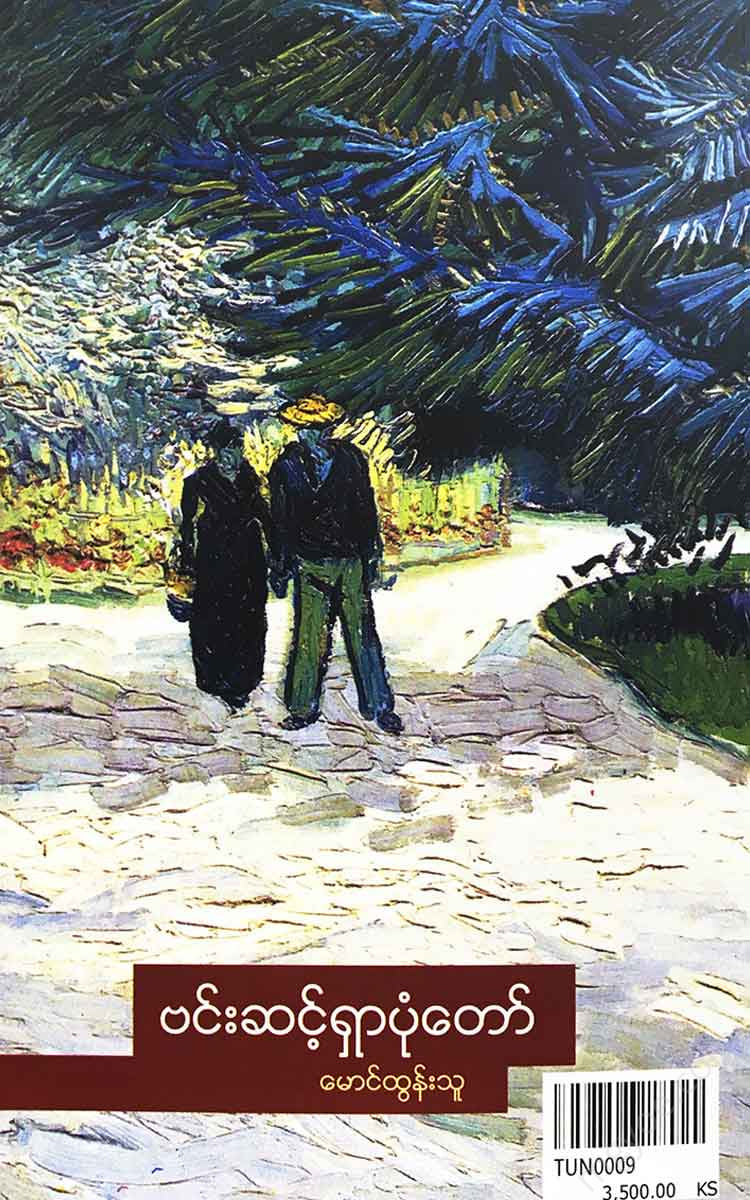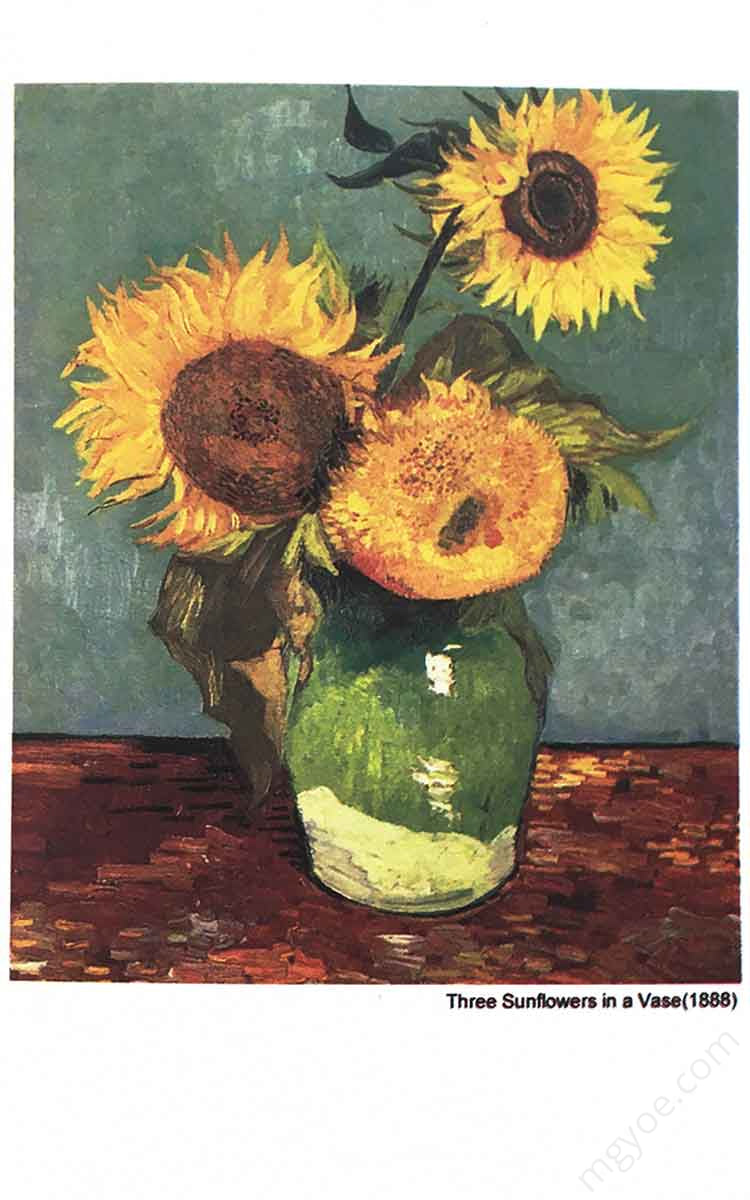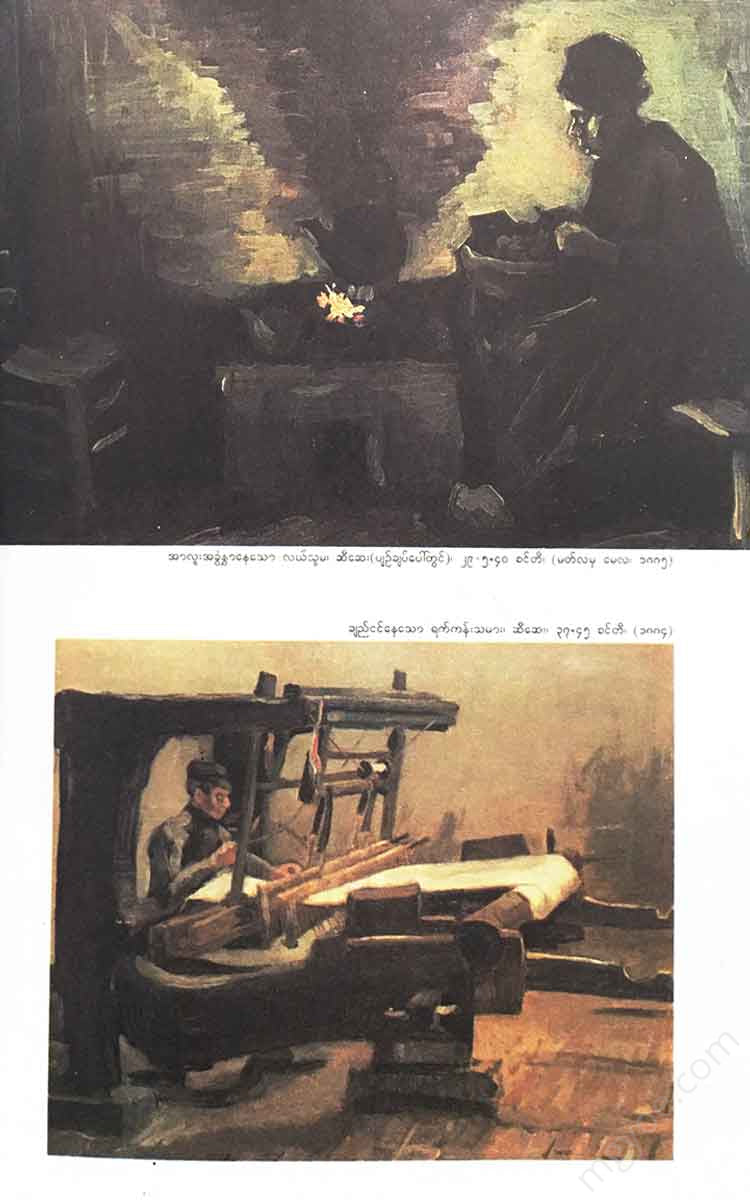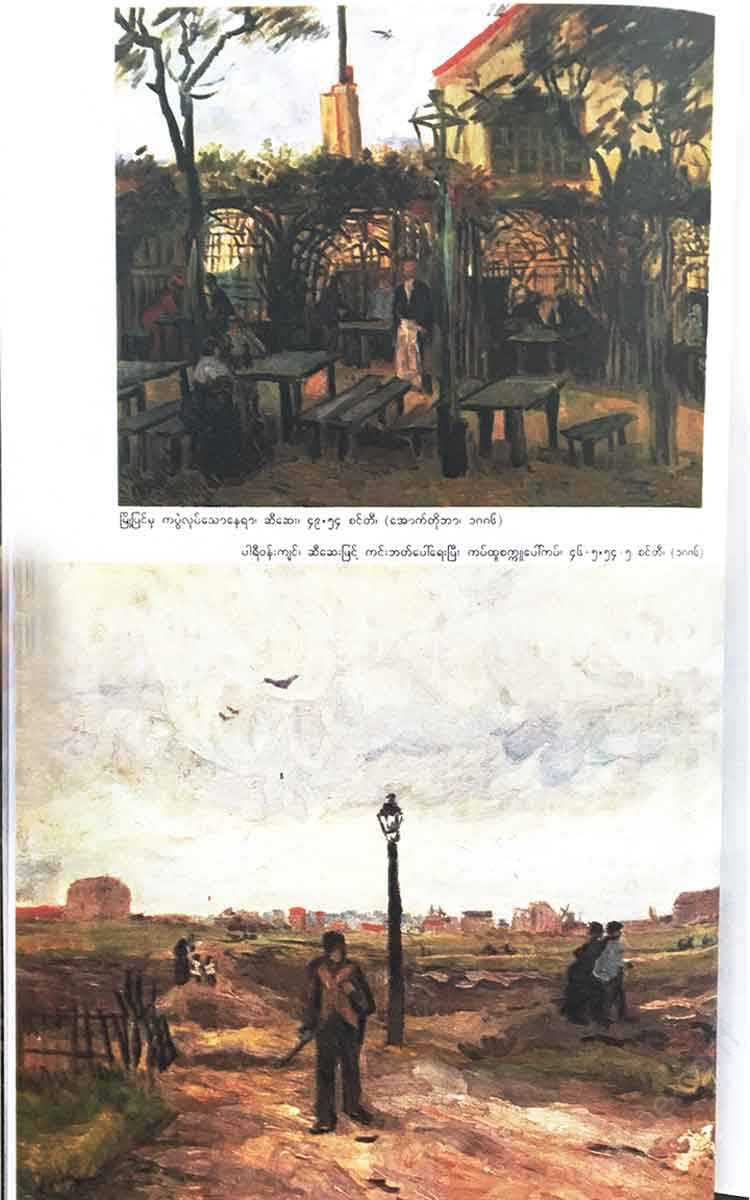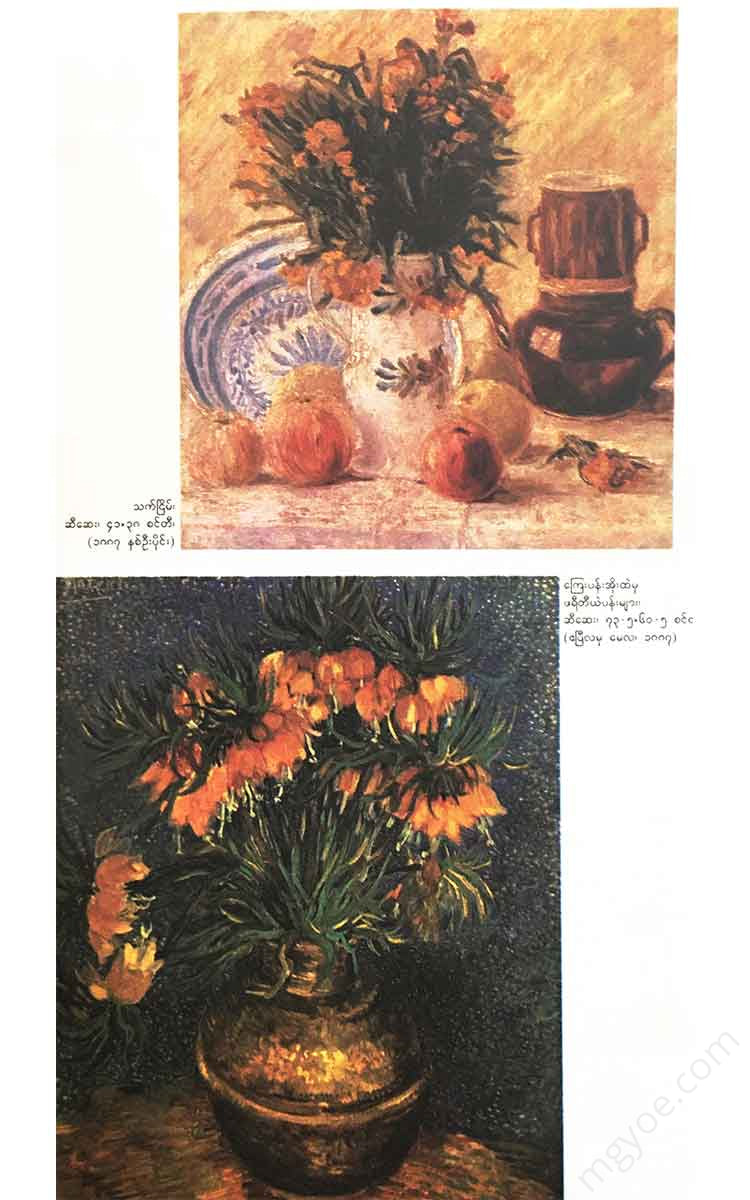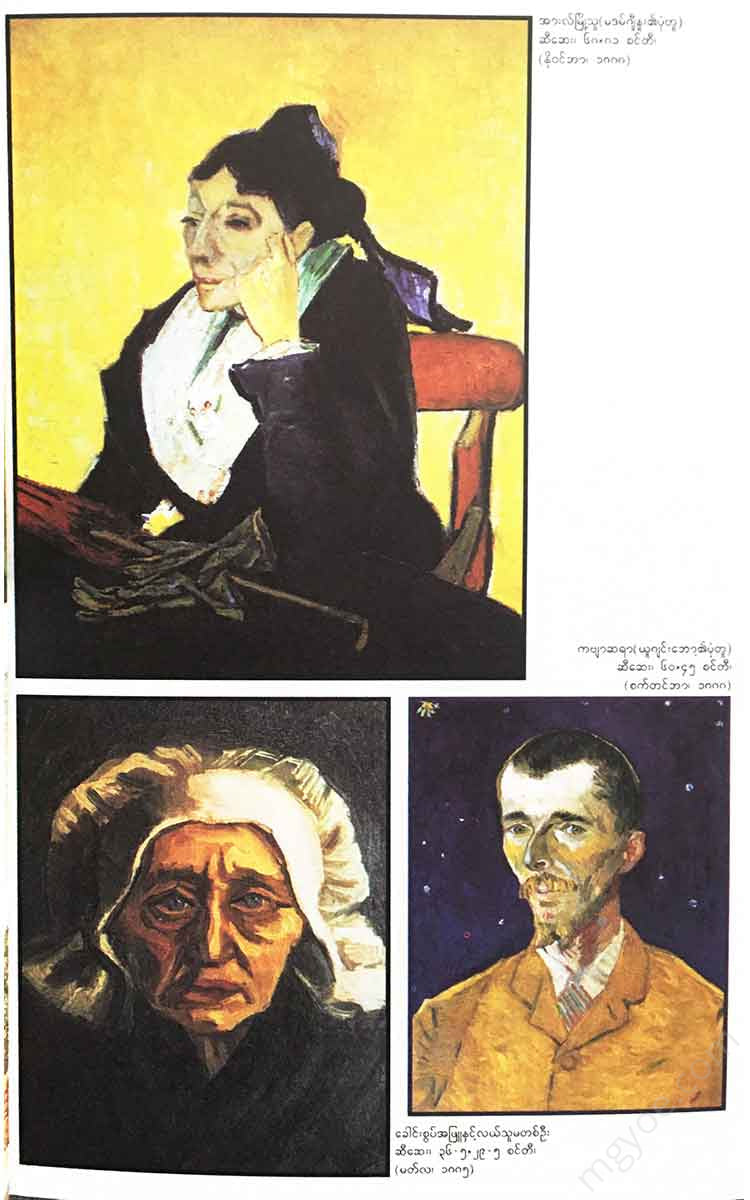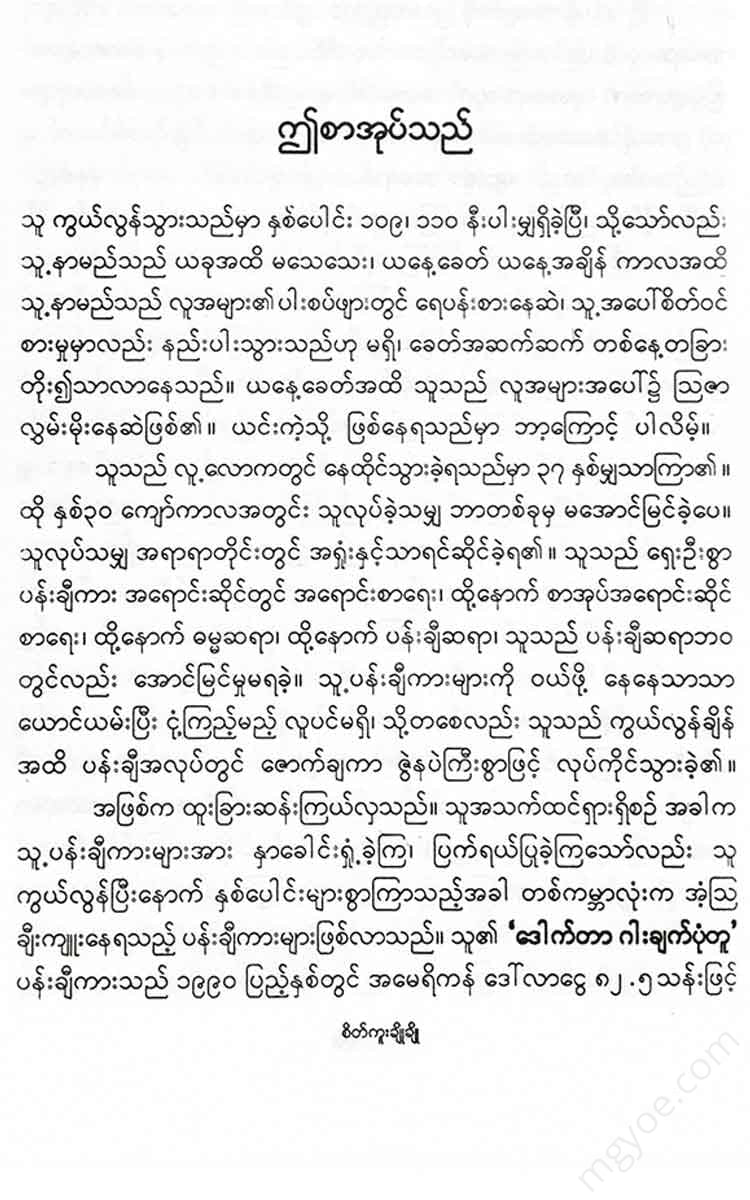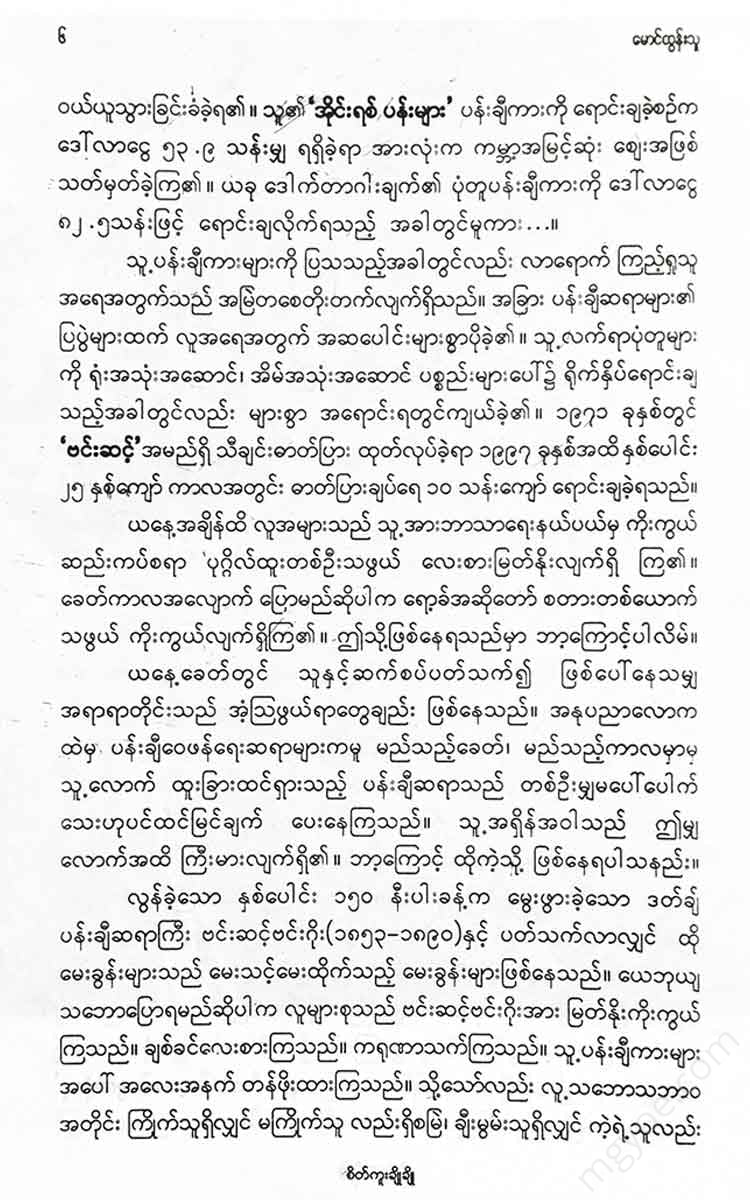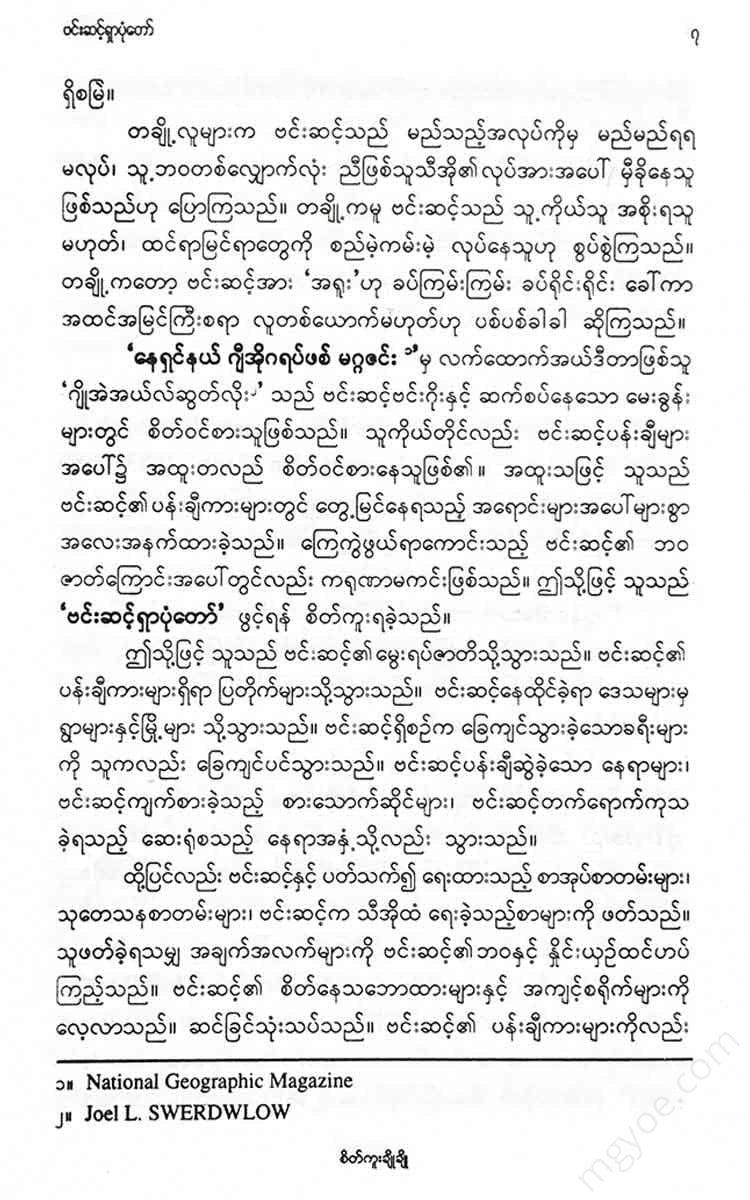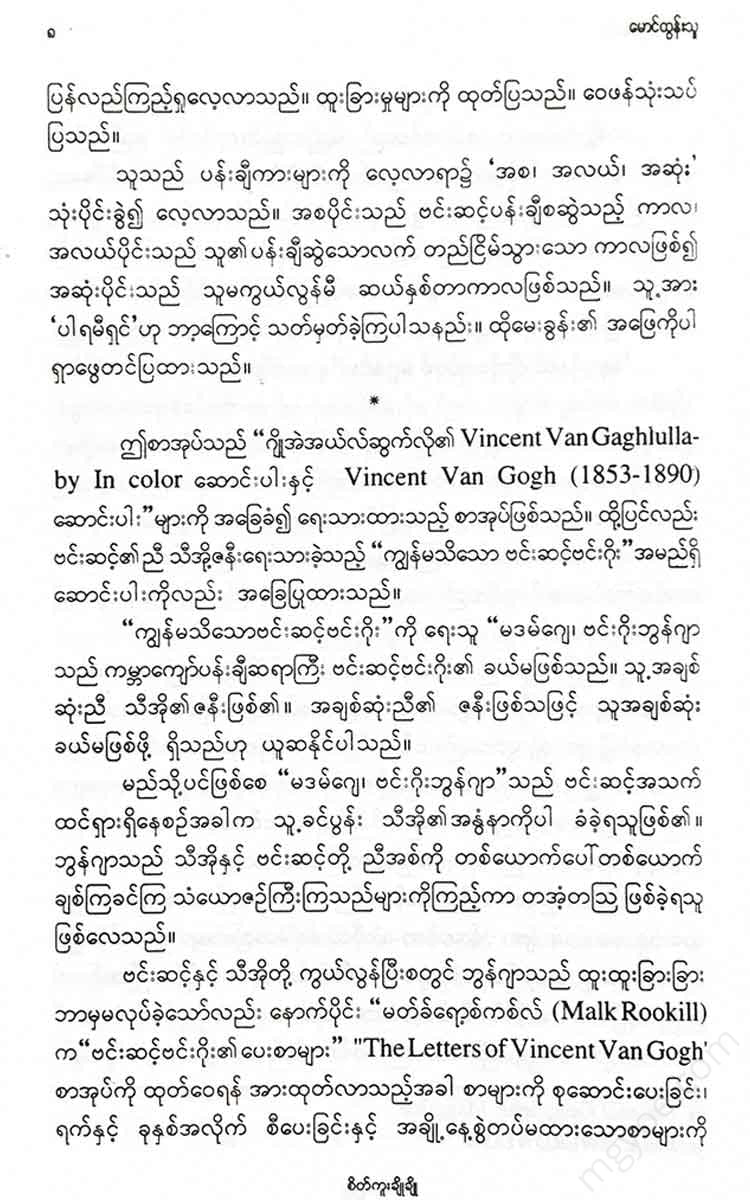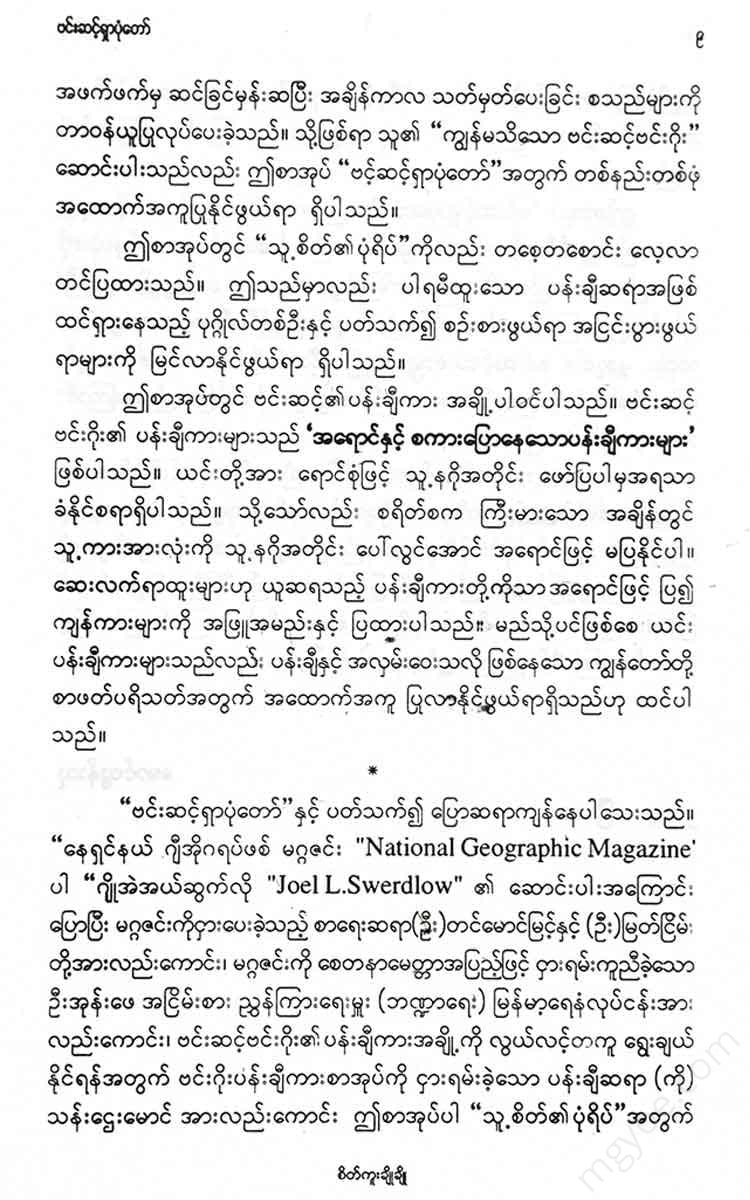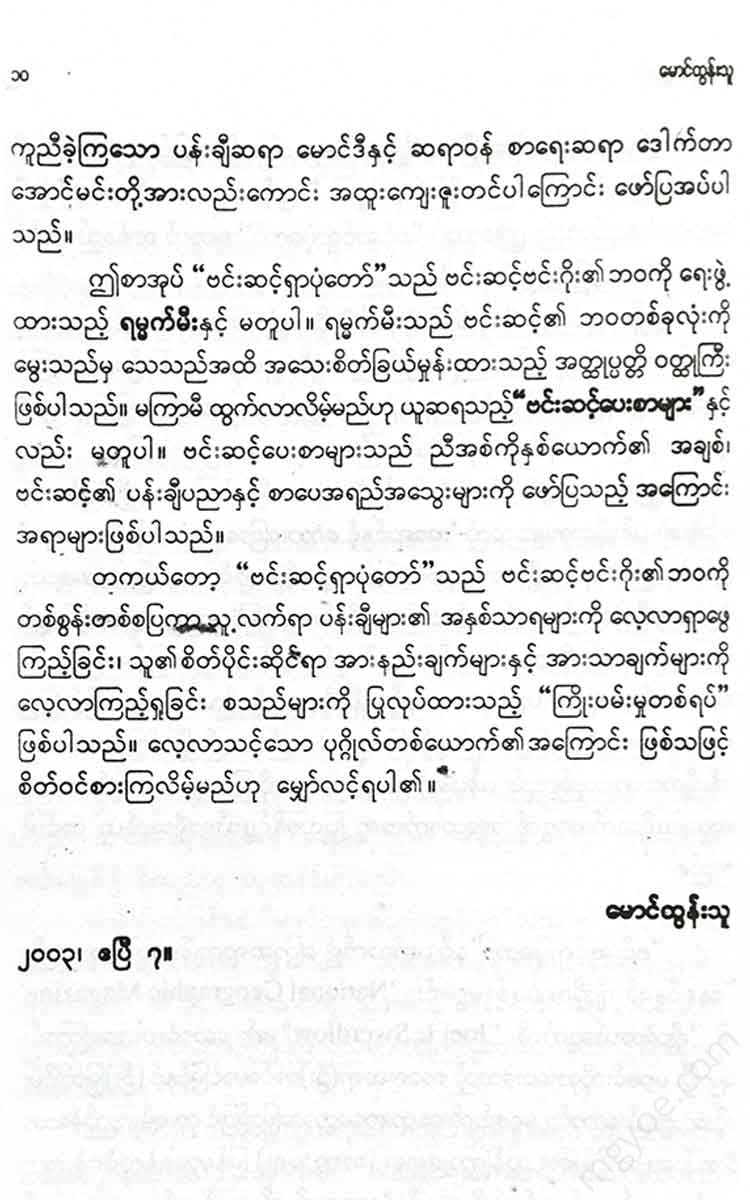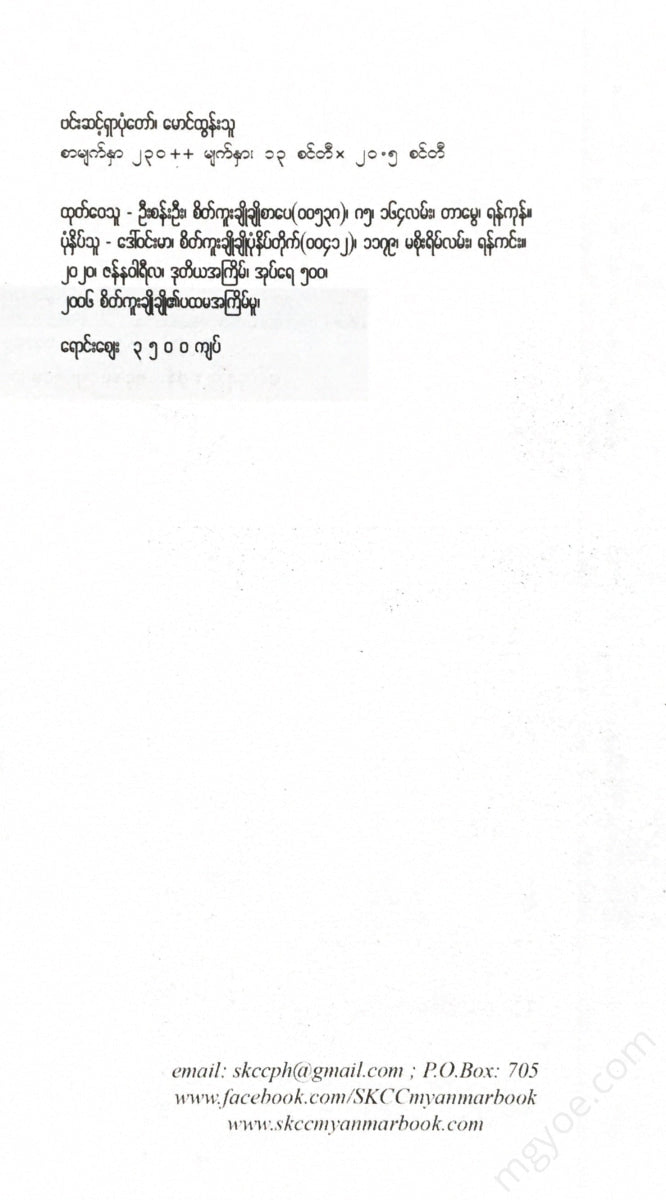စိတ်ကူးချိုချိုစာပေ
Maung Tun Thu - Vincent's Search
Maung Tun Thu - Vincent's Search
Couldn't load pickup availability
Vincent van Gogh
Throughout his life, Vincent van Gogh lived in the midst of this prison of consciousness. He sought to escape from this prison of consciousness through his love and attachment to the world and to human life. In the midst of this, the work of a missionary, his efforts to help people, and his love for painting began to dominate him. The demands of these activities became overwhelming. Because of these demands, Vincent suffered both physically and mentally throughout his life. Ultimately, these hardships led to his death.
Vincent was born on March 30, 1853, in Groningen, a small village in the Dutch province of Brabant. His father was a Lutheran priest who followed the teachings of Martin Luther. His father wanted Vincent to become an art dealer. So, at the age of sixteen, Vincent joined the art dealer Gommel Galleries, founded by his uncle.
He first worked as a sales clerk in the Loughborough branch for three years between 1870 and 1873. He then moved to the London branch, which was much larger than his current branch, for two years. He finally moved to Paris, France, where the company was headquartered, in 1875. He spent many hours in art galleries and galleries, and was able to view many of the works of the great masters, but he was not at all interested in the art business he was involved in.
Vincent, who was still not sure what he was passionate about or what he wanted to do, quit his job on a sudden impulse and returned to his parents' home in early 1876. From the moment he arrived home, he read a lot of books. He drew a lot of sketches. He had a strong desire to do religious work. Then he wandered from place to place with a restless mind.
First he went to Ramsgate to study languages. Then he went to Isleworth and became a chaplain. He went to Dordrecht and became a salesman in a bookshop. He went to Amsterdam to study theology. Then he went to Brussels to study for the priesthood.
In January 1879, he was appointed a missionary and sent to the Belgian coalfields of Boerne. While there , he said, he discovered what poverty was. He shared the hardships and sufferings of the coal miners. He gave away all his food and money to the families of the workers. He himself suffered greatly from hunger. He suffered both mentally and physically. The health problems he suffered at that time were such that he never recovered.
During the summer of 1880, during the day at Boisneau, Vincent made a new decision. He thought that the best way for him to live his life was to immerse himself in painting. He expressed his desire in a letter to his brother Theo. The only person he had to rely on throughout his life was his brother Theo. He rarely revealed his feelings to anyone except his brother Theo.
Vint's artistic career was similar to his previous attempt to become a missionary. It went wrong again. While he was in exile, he constantly drew pictures of coal miners and their families in his notebooks. He also documented their lives in sketches.
He then went to Brussels in 1880. There he studied anatomy and the close-up view of a landscape. He then followed his parents to Athens, where they had recently moved. His family's disapproval of his ambition to become a painter, and his second love affair, led to his suffering. His second love was his widowed cousin, who was visiting his family.
Vincent suffered a similar heartbreak to that he had experienced in London in 1874. He gave up on his love life and moved to Loughborough in the winter of 1881. At first, he lived and painted under the tutelage of his cousin, Anton Mauve. He then became involved with a prostitute named Christine. He was financially strapped and left for Nunavut, where his parents had moved. He lived with his parents for two years, during which time he devoted himself to painting. During this time, he fell in love with a neighbor, Murdoch Beijman. However, the girl's parents did not approve, and Murdoch attempted suicide. This incident deeply affected Vincent.
The sudden death of his father left Vincent de Paul helpless. He was further troubled by his constant financial difficulties. He left for Antwerp in the winter of 1885. Then, out of necessity, he went to live with his brother Theo in Paris for two years. During this time, his painting skills improved greatly. It is said that the techniques for his later remarkable paintings were acquired during his time in Paris.
While in Paris, he attended the Camon School of Art. It was here that he met Toulouse-Lautrec, Bernard, and other young artists. He had frequent discussions with these artists about painting techniques, especially the style of the Impressionists.
He also became very close friends with artists such as Pissarro, Sorat, Signet, and Gauguin. Gauguin in particular became his closest and closest friend. When he arrived in Arles, he invited Gauguin to come and live with him. Gauguin arrived in Arles in October 1888. The two artists painted in their own unique style.
However, during the two months they lived together, they constantly argued. They fought. They had different personalities and different ideas. The endless arguments finally became unbearable for Vincent. On December 24, Vincent tried to stab Gauguin twice, due to a sudden attack of mental anguish. The attempt ended with Vincent cutting off the tip of his own ear with a knife. This was the first sign of a mental illness.
In May 1889, he was admitted to the psychiatric hospital of Saint-Rémy-de-Provence as an inpatient. It was considered that he needed close observation. However, his mental state did not improve. After a year in this hospital, he was transferred to the psychiatric hospital of Auvers-sur-Québec. There he met Dr. Garchet, an admirer of Impressionist painting.
After a year, his mental illness had improved somewhat. He came to Paris to live with Theo for a while. Everything seemed to be going well for Vincent. However, he suffered a severe attack of mental illness and shot himself. He died two days later, on July 29, 1890. His beloved brother Theo and his best friend, Gertrude, were by his side.
